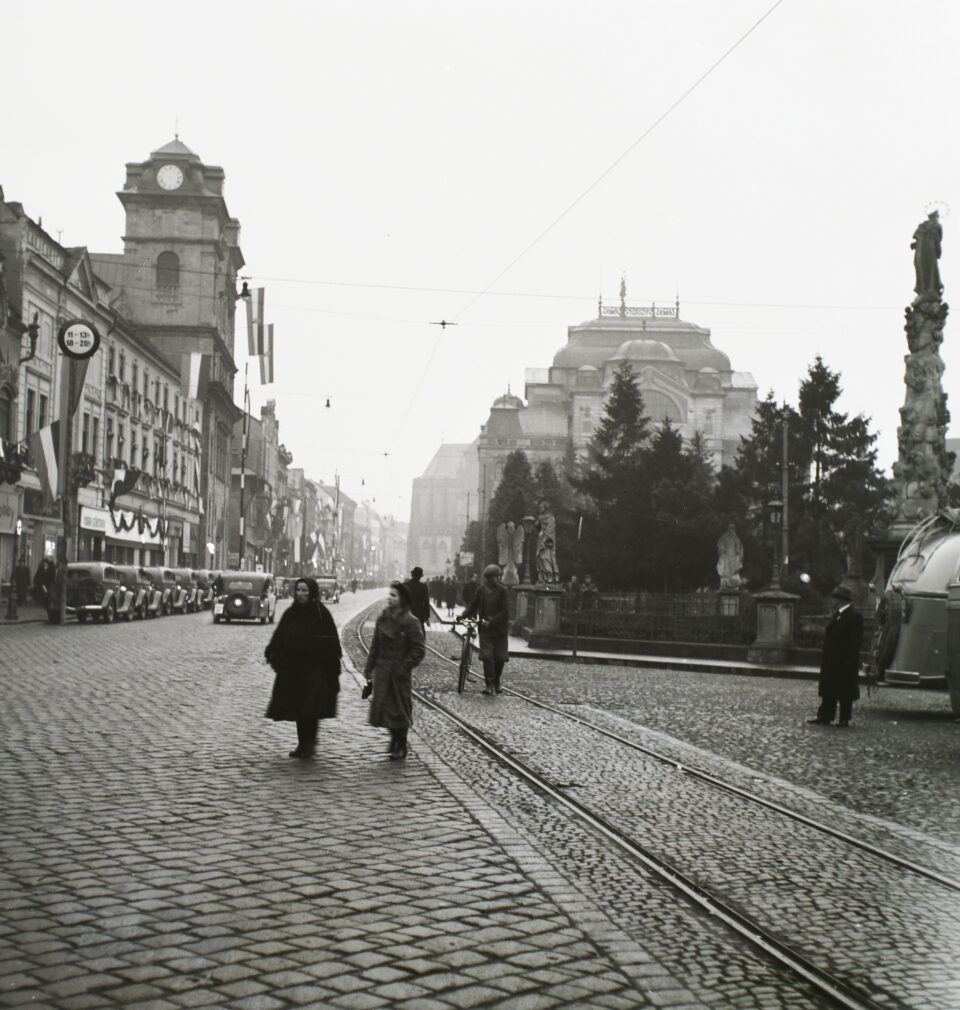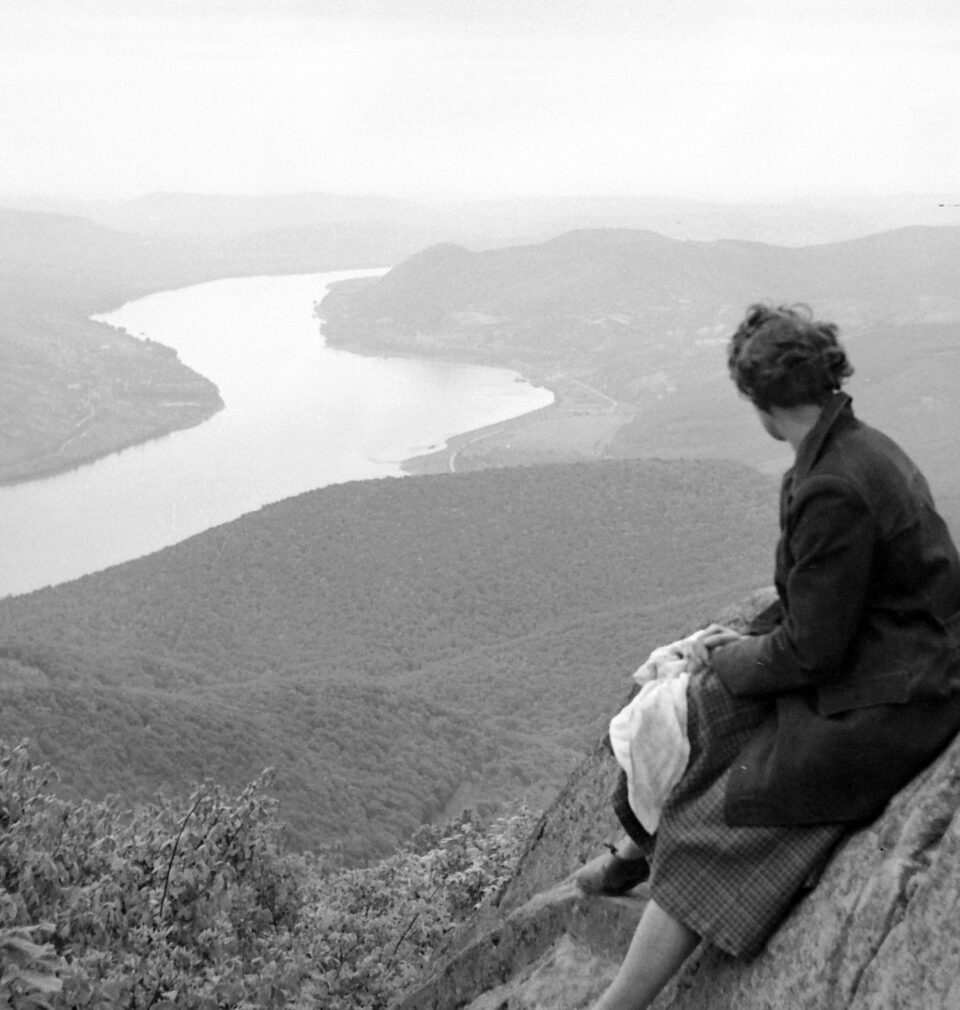
The Elusive Centre (of Europe)
Kassa and Márai. An Unhealed Wound
Publication: 14 October 2021
The Elusive Centre (of Europe)
Kassa and Márai. An Unhealed Wound
Publication:
TAGS FOR THE ARTICLE
TO THE LIST OF ARTICLESKassa is a mythical place in the works of Sándor Márai. He spent his childhood there and his most important memories were connected with the city. Although, he left Kassa for good after the Trianon Treaty, he returned to it repeatedly in his writings. Besides Kolozsvár[1], it was a place which produced the best models of a conscious and creative bourgeoisie which cultivated culture, and who deserved to be called patricians, a class which belongs to the most important themes in Márai’s writings. His great early novels – The Rebels and Confessions of a Bourgeois – are set in Kassa. In Confessions, Kassa is shown realistically, while in The Rebels and subsequently in the later volumes of the Garren saga, it is simply called the Town, and already made unreal with a sea and port added.
Márai followed the turbulent story of Kassa and stayed in touch (his parents still lived there for some time), sent letters to the Hungarian newspaper published there and reacted to the changes in the city, of which the first of the two articles below is a good example.
The second one is from the volume Gift from Fate, edited in 1991 but published 13 years later. It is a collection of press articles by Márai on the return of the so-called Upper Province (and later also a part of Transylvania) to Hungary in November 1938. Márai arrived in Kassa a few days after the decisions of the first Vienna arbitrage were announced.
His last visit there was in 1941, four weeks after the German army took Paris. He flew to Kassa for one day to say farewell to his native city. This brief stay was described in a beautiful book Kassai őrjárat (Kassa Patrol).
Losing Kassa twice became an unhealed wound for Márai. Twenty years after the Trianon Treaty he wrote: “I can’t visit the dearest place, my small, familiar homeland; therefore everywhere in the world I feel homeless, I travel to European cities and I am torn by an unspeakable longing, of which I am ashamed, about which I talk to no one and which can’t be assuaged by any views or experiences.”
Although decades had passed, every memory of Kassa evoked a strong emotional reaction in the writer, as witnessed by two entries in his Diaries from the early 1970s: “At the neighbouring table in the restaurant car of the fast train a Czech couple are seated. Sitting next to them is an elderly Austrian. The Czech tourist, a fat man with a big belly, is constantly eating and speaking for a hundred kilometres. He is boasting that he often travels abroad, as Prague authorities send him to congresses. He was recently in London and now they are going to Rome. Probably a good communist, a trusted card-carrying fellow traveller. Someone in the ‘good soldier’ Švejk vein. He survived the Prague Spring and is doing well in Czechoslovakia even under the Soviet occupation. I hear him boasting in a deep voice to his neighbour at the table: Die östlische Stadt unserer Republik, Košice…[2] When you get old, self-control comes automatically. And still I feel as if I had been punched in the stomach. L. and I don’t look at each other but we are thinking the same: that we were both born in the city which the communist Švejk is calling Košice. In fact, this city had been called Kassa for centuries. And both the city and the population around it, the inhabitants of the Csallóköz region, one million people – were Hungarian, both in their minds and in fact. Now, when the Czech communist is calling this city Košice, the reality distorted by the devious propaganda is getting more clear for a while. The political entity which Beneš and his comrades concocted using violence and historical falsities, forced the nationalities – Hungarians, Slovaks and Germans – which never had any sense of community with the Czechs, to live in harmony with them. Also, in the interwar period ‘Košice’ remained an alien in Czechoslovakia, as a Christian captive among the Moors. But if anyone dared to speak about it and demanded a peaceful revision (without a war!), implementing the nation’s right to self-determination, he was castigated as a trouble-monger, mutineer and irredentist. The communist Švejk is happily drinking his beer. I call the waiter and pay the bill.”
And the second entry: “There is a book in the mail, its title: Košice. It contains twenty-one photographs, some in colour, all very interesting. It was published by Edicia Obrazových Publikacii. The photographs are preceded by a foreword in Slovak. This album, beautifully edited, carefully laid-out and produced, came out in 1973. I leaf through the pages and see photographs of the wonderful cathedral, its renovation supported two centuries ago by my father’s ancestors. Gothic, Renaissance, Baroque facades of houses, gateways and courtyards in the central part of the city. Rooms with arched vaults, in which we lived, the Townhouse and the Komitat Office, the well-balanced nobility of the lines of the Lőcse House, the urban organism developing for centuries in accordance with its inner logic – all this is spread before the reader. How noble was this city! How much it was the City, Urbs, seat of the patricians – and how rarely you encountered such cities in Hungary! The Czechs had no part in building Kassa. These houses were built for centuries buy the inhabitants – Hungarians and Magyarised German settlers from Špis, called Cipszers. And the people born here, in the shadow of the Gothic cathedral, were “town-dwellers” in a different way than anywhere else in Hungary – they were locked in their patrician form of life more than landowners or the aristocracy. They were patricians and didn’t want to be anything else or pretend to be anything else. They were born, lived and died in this Gothic, Renaissance and Baroque setting. They had a distinctive lifestyle and way of thinking. Kassa was “different”. And now the photographic album published in 1973 presents this beautiful Hungarian city in such a way as if its builders, Hungarians and Cipszers, had never lived there. As if this jewel, in which the Czech city-building ability had no part for centuries (for they didn’t live there at all) was a Czech work! Czech propaganda – continually since 1919, even in 1973 – is showing Kassa in such a way as if Košice were the creation and settlement of the Czechs and Slovaks. The lie disguises the Hungarian nature of the city, in the book there is no mention of the fact that for centuries Kassa was one of the main Hungarian centres of the struggle for freedom. It is passed over in silence that the tomb of Francis Rákóczi is in the cathedral, it is not said that the ‘citizens of Kassa’ stood up to the oligarchs. There is no word about the Hungarian writers and poets who lived in this city and wrote in Hungarian during the times when the Czechs and Slovaks didn’t even live in its vicinity. One photograph presents a memorial plaque for the ‘Slovak writers R.U. Podtaransky and I. Zaborsky as the literary celebrities of Kassa, but the book gives no single name of a Hungarian writer born and working here. This cynical example of falsifying history is something rare even in the post-war annals of Czech propaganda, so full of lies. The dangerous European political conmen, Beneš and his descendants, agents of Czech indoctrination, used this photographic album to deceive the world by claiming that Kassa was the creation of the Czechs. But the Czechs had nothing to do with this urban masterpiece. Their only additions are that they made a Gypsy thoroughfare and they surrounded the city with monstrous concrete housing, putting the immigrant Czechs and Slovaks there with the task of erasing the Hungarian character of the city. The rape on truth perpetrated by this book within the eyesight of the entire world gives me such pain as an unexpected blow.”
***
[1] Today, Cluj-Napoka (Romania).
[2] Die östlische Stadt unserer Republik, Košice… (German) – Košice, the eastern-most city of our republic…
Copyright © Herito 2020


